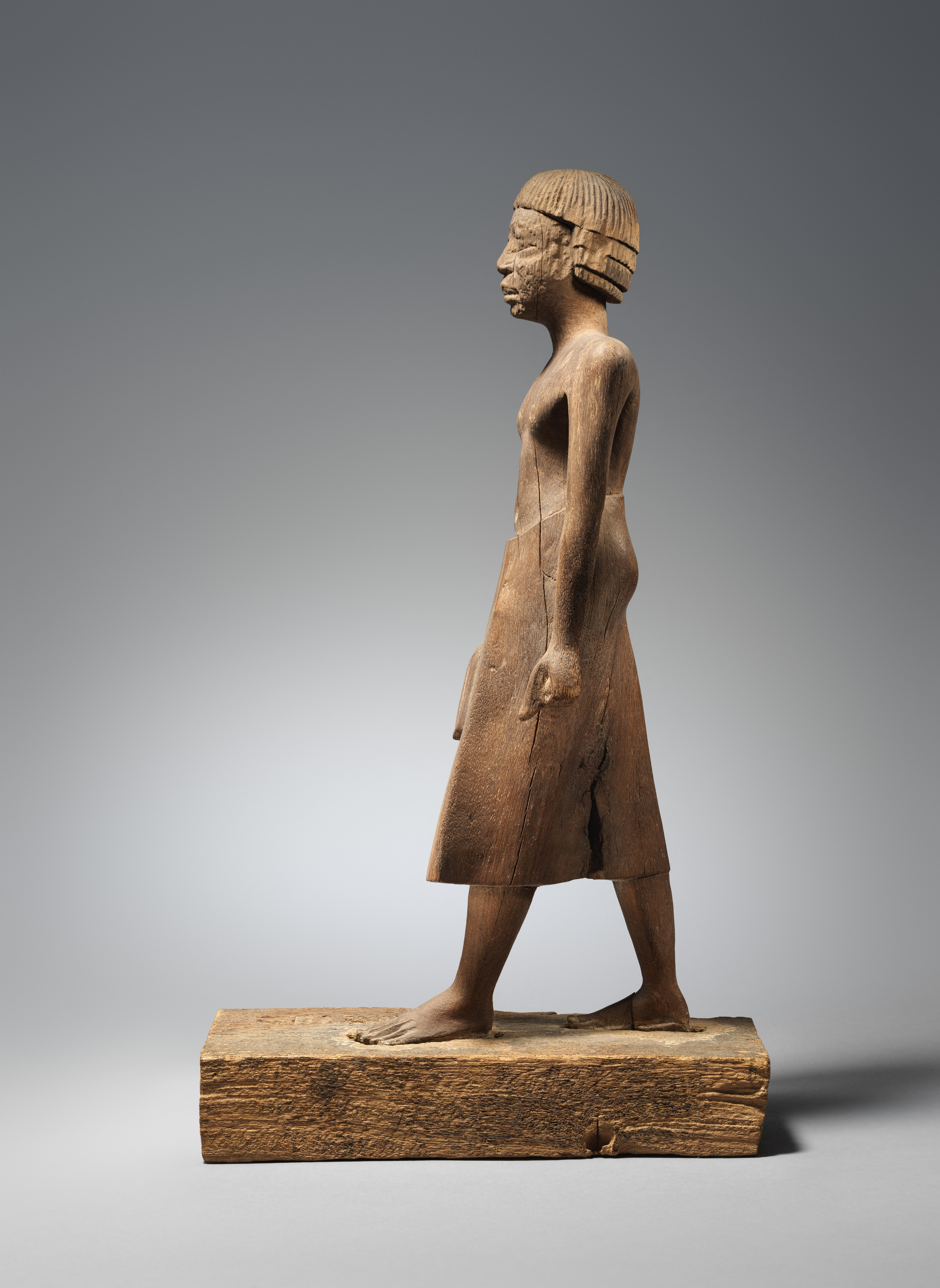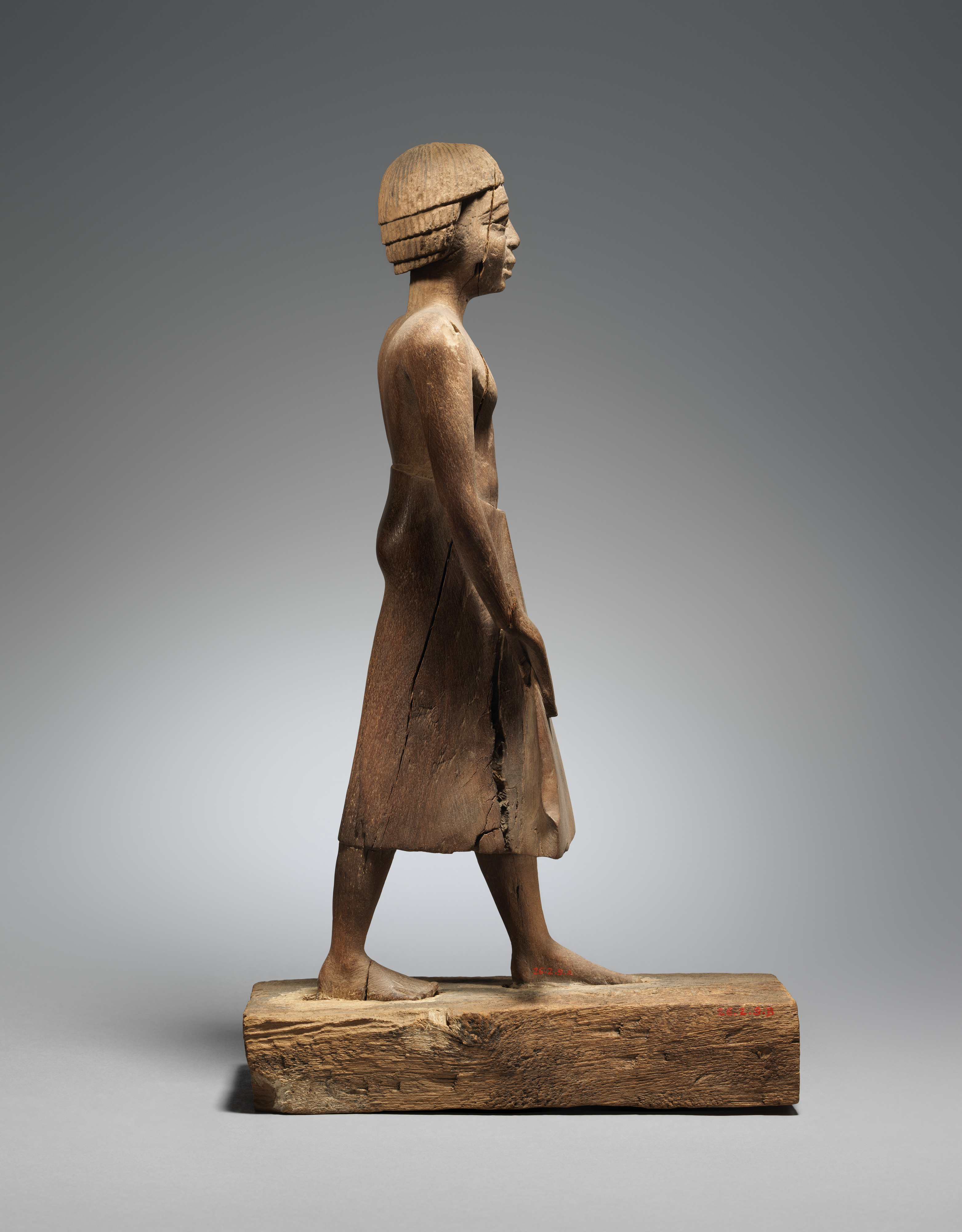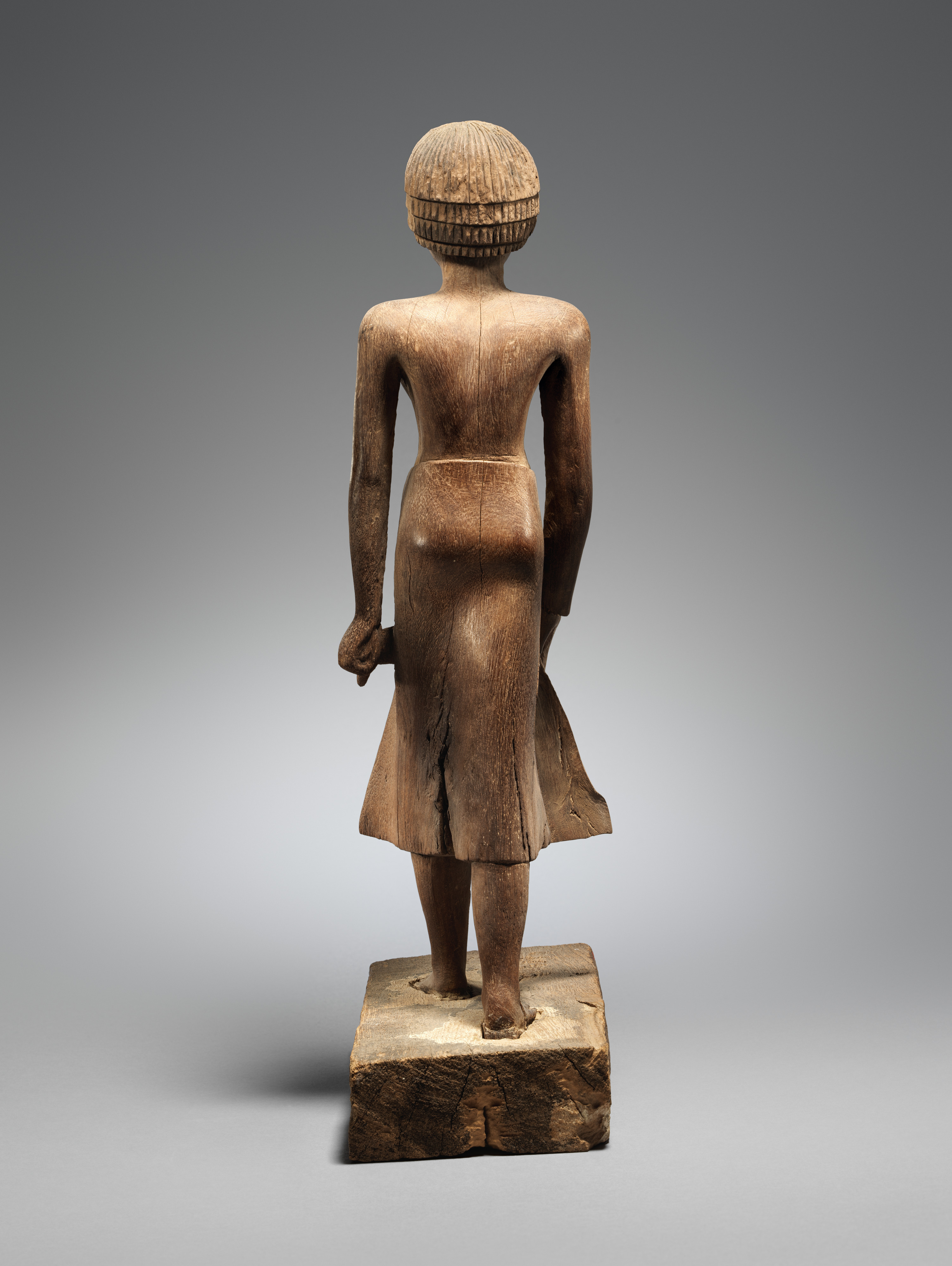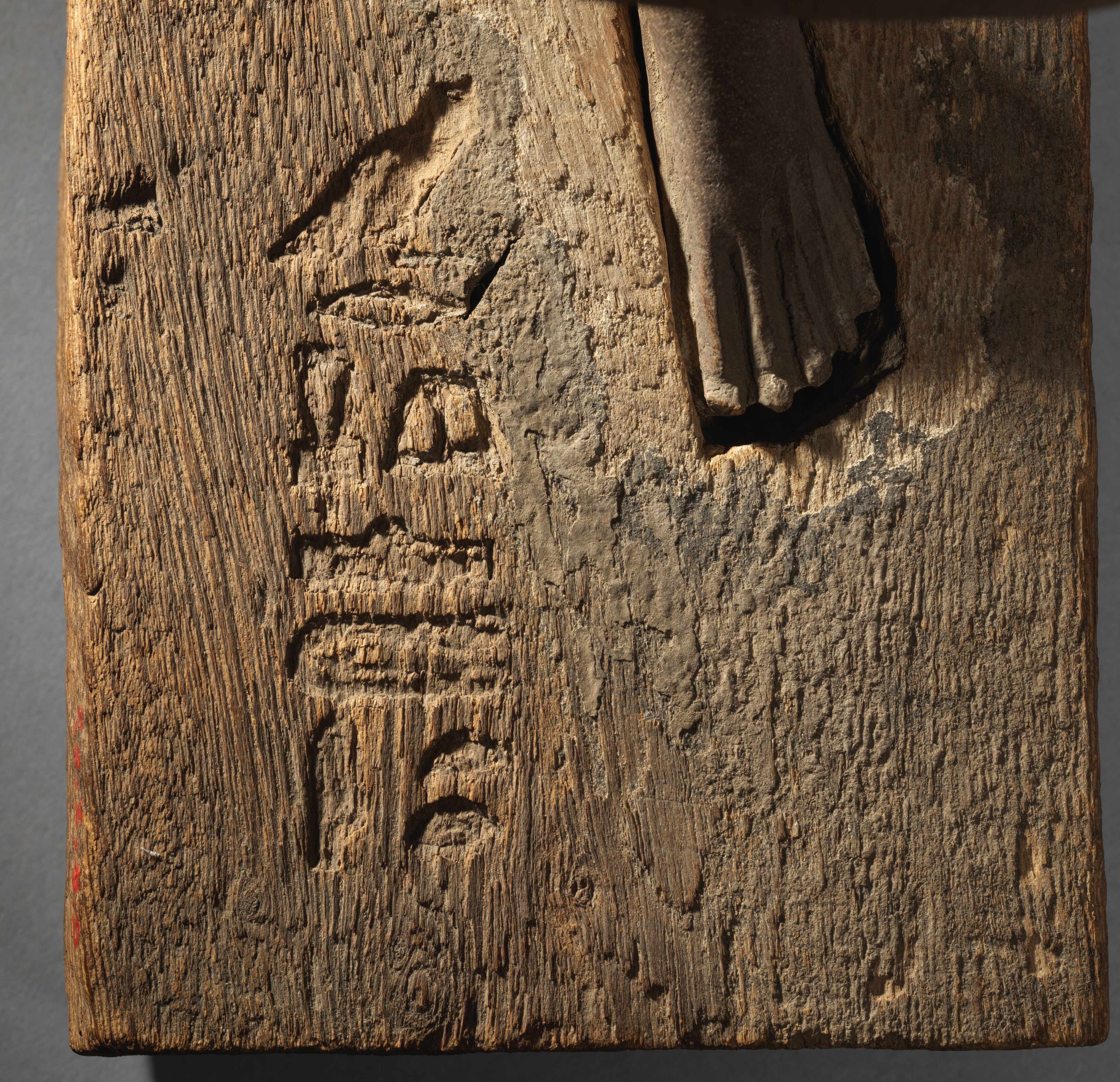Statue of Tjeteti in middle age
Old Kingdom
The long kilt with a projecting front panel on this statue contrasts with the short kilt on the statue of the same man (26.2.8), cueing the viewer to the fact that the first is meant to represent Tjeteti as a young active man and the second as a mature official.
These two statues have been pointed to as exemplars of a 'second style' that emerged in Egyptian elite art at the end of the 5th Dynasty and gradually became the prevailing style. Where serene self-contained countenances had been the order since the 4th Dynasty, the faces of statues in the second style may show overlarge eyes and countenances lined not by age but by animation. Bodies of statues may also be thinner and less muscled, and hands may be overlarge. The change probably reflects religious changes at the time.
Due to rights restrictions, this image cannot be enlarged, viewed at full screen, or downloaded.
This artwork is meant to be viewed from right to left. Scroll left to view more.







